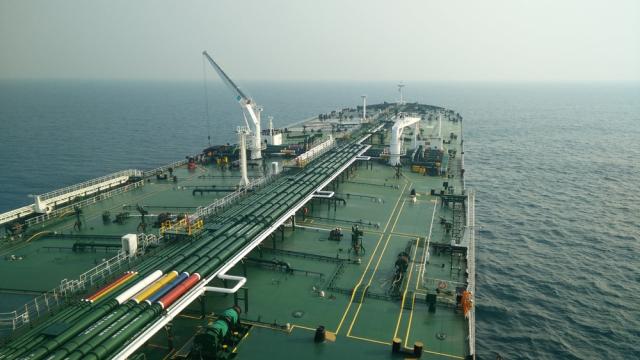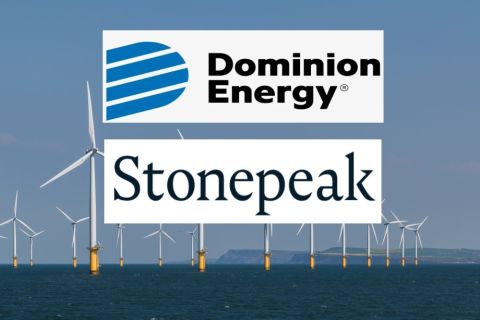
The facility proposed by Sentinel Midstream would have the capacity to fully load very large crude carriers, which can accommodate up to 2 million barrels of oil. (Source: Shutterstock.com)
Sentinel Midstream LLC has launched its bid to develop a deepwater crude export facility off the Texas Gulf Coast.
The company said on June 3 it submitted a license application to the U.S. Maritime Administration (MARAD) on May 30 to build and operate the facility through its Texas GulfLink subsidiary. The facility, which would be located offshore Freeport, would have the capacity to fully load very large crude carriers (VLCCs)—which can accommodate up to 2 million barrels of oil.
The move comes as crude exports from the U.S. Gulf Coast region are booming—spurred by production growth in the prolific Permian Basin—and putting pressure on existing infrastructure. It follows three other applications submitted to MARAD to develop similar projects in recent months.
Dallas-based Sentinel said its Texas GulfLink project would include an onshore crude storage terminal connected to a manned offshore platform around 30 miles off the coast by a 42-inch pipeline. From the platform, oil would be transported to two Single Point Mooring buoys, and then onto VLCCs and other vessels, with loading rates of up to 85,000 barrels per hour.
“With the submission of the license application to MARAD, Texas GulfLink has completed a major milestone towards receiving approval to construct and operate a deepwater crude oil export facility,” said Jeff Ballard, Sentinel’s president and CEO. “As the neutral infrastructure export solution for shippers, Texas GulfLink will provide a necessary crude oil export outlet for the expected increase in U.S. crude oil production.”
Sentinel said financing for the project would be provided by Cresta Fund Management.
Abadie-Williams is the primary engineering and regulatory consultant and Kean Miller LLP is the lead legal advisor for Texas GulfLink.
“We are pleased with the commercial support Texas GulfLink has received and the continued strong interest from shippers who recognize the need for additional export capacity,” said Chris Rozzell, Cresta’s managing partner. “By reducing capacity constraints in Gulf Coast ports and creating an economic oil export outlet, Texas GulfLink will allow U.S. oil producers to continue to develop and increase U.S. oil production without potential production curtailments due to lack of export capacity.”
U.S. crude exports rose to an average of 3.0 million barrels per day (MMbbl/d) in February, before dipping to 2.7 MMbbl/d in March, according to the latest data from the U.S. Energy Information Administration (EIA). The surge in exports began in late 2015 when the U.S. government lifted a 40-year ban on most overseas sales of crude. It is being compounded by the fact that most U.S. refining capacity is geared toward processing heavier crude grades, while booming output from shale plays is light, leading producers to look primarily overseas for markets.
The EIA’s data show that U.S. crude production hit a new high of 12.4 MMbbl/d in the final week of May, with light, tight oil (LTO) from shale plays accounting for an ever greater share of total output. This has led to a rush among infrastructure companies to build new export capacity on the Gulf Coast, with the trend becoming increasingly prominent over the past year.
An additional obstacle is that most U.S. ports are too shallow to handle VLCCs, which require 66 feet of water when fully loaded, while ship channels on the Gulf Coast are typically only 40-45 feet deep. Efforts to address this challenge have resulted in a $380 million project, launched at the Port of Corpus Christi to deepen its ship channel. Other developers have turned to offshore facilities as a solution.
The U.S. started loading VLCCs directly in February 2018 at the Louisiana Offshore Oil Port (LOOP), a joint venture led by Marathon Petroleum that is mainly geared toward imports. Prior to this, VLCCs had to be loaded using the reverse lightering process, in which smaller vessels such as Aframax tankers—with a capacity of 750,000 barrels—conduct ship-to-ship transfers with a VLCC at anchor further out to sea. The process takes 2-3 days longer than direct loading and results in higher shipping costs.
Since the LOOP started loading VLCCs for export, a number of proposals have been put forward for facilities also capable of accommodating these supertankers. Applications to MARAD have been filed by Trafigura, Enterprise Products Partners and an Enbridge-led joint venture for new export terminals with VLCC capabilities. MARAD has 356 days to review and decide on project proposals.
Putting additional pressure on export facility developers is the fact that new pipeline capacity from the Permian Basin and the oil hub at Cushing, Oklahoma, will cause a major uptick in oil volumes making their way to the Gulf Coast in the coming years.
RBN Energy estimates that there is 2.2 MMbbl/d of capacity announced or under construction from Cushing and 4.3 MMbbl/d from the Permian to the Gulf. But even with new pipeline additions to the coast, and U.S. crude export capacity projected to grow up to 10 MMbbl/d by 2022, this would not create enough demand to accommodate four new VLCC-capable terminals. Which of the projects is ultimately built will depend largely on economics, but securing necessary approvals from MARAD and other authorities will give any of the developers a head start in the race.
Recommended Reading
Marketed: Amati Royalties Powder River Basin Opportunity
2024-03-01 - Amati Royalties has retained EnergyNet for the sale of a Powder River Basin opportunity with four wells and two pending wells in Campbell County, Wyoming.
Marketed: Stone Hill Minerals Holdings 95 Well Package in Colorado
2024-02-28 - Stone Hill Minerals Holdings has retained EnergyNet for the sale of a D-J Basin 95 well package in Weld County, Colorado.
Marketed: EnCore Permian Holdings 17 Asset Packages
2024-03-05 - EnCore Permian Holdings LP has retained EnergyNet for the sale of 17 asset packages available on EnergyNet's platform.
Marketed: Wasatch Energy Management Non-operated WI in Utah
2024-02-14 - Wasatch Energy Management has retained EnergyNet for the sale of non-operated working interest and royalty opportunities in Duchesne and Uintah counties, Utah.
Stonepeak, Dominion Energy to Partner on Virginia Offshore Wind Project
2024-02-22 - Stonepeak will acquire a 50% interest in Dominion Energy’s offshore wind project, which is expected to be the largest offshore wind farm in the U.S.

